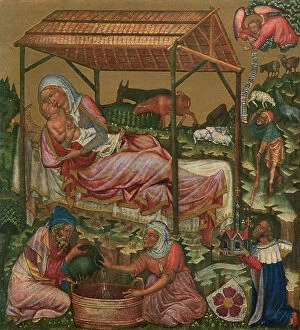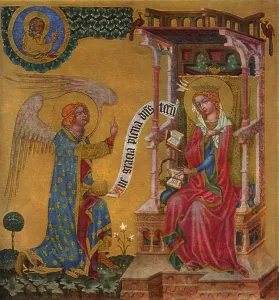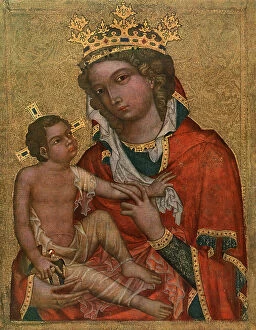Vyssi Brod Altar Collection
The Vyssi Brod Altar, created by the Master of the Vyssi Brod Altar in 1350, is a stunning masterpiece that depicts various scenes from the life of Christ
All Professionally Made to Order for Quick Shipping
The Vyssi Brod Altar, created by the Master of the Vyssi Brod Altar in 1350, is a stunning masterpiece that depicts various scenes from the life of Christ. Each panel tells a different story and showcases the artist's incredible talent. In "Birth of Christ, " we witness the humble beginnings of Jesus as he enters this world surrounded by Mary and Joseph. The delicate brushstrokes and vibrant colors bring this moment to life, evoking a sense of awe and wonder. Moving on to "Annunciation of the Virgin Mary, " we see Gabriel appearing before Mary to deliver the news of her divine pregnancy. The artist captures Mary's surprise and contemplation beautifully, making us feel connected to this pivotal moment in history. One cannot help but be moved by "The Vyssi Brod Crucifixion. " This powerful depiction shows Jesus hanging on the cross, his body wracked with pain. The attention to detail in every wound and expression conveys both agony and grace. "The Kaufmann Crucifixion" further explores this theme with its haunting portrayal of Christ's sacrifice. The somber tones and dramatic composition draw us into this solemn scene, reminding us of Jesus' ultimate act of love for humanity. Turning our attention towards devotion, "Madonna of Kladsko" reveals an intimate moment between mother and child. The tenderness captured here speaks volumes about maternal love while also emphasizing Mary's role as an intercessor for believers. In contrast, "Madonna Veveri" presents a regal depiction where Mary exudes strength and majesty. Her serene expression invites reverence as she holds baby Jesus close to her heart – a symbol of protection for all who seek solace in her presence. As we delve deeper into Christ's journey, "Ascension" portrays his triumphant return to heaven after his resurrection. This celestial scene radiates hope as angels surround him in glorious celebration – an image that inspires faith and reassurance.













